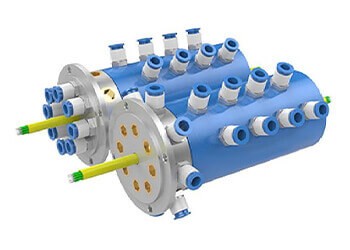In the world of international trade, accurate classification of goods is crucial for customs clearance and compliance with regulations. For engineers and businesses involved in slip ring connector imports and exports, understanding the Harmonized System (HS) code is essential. In this article, we delve into the intricate world of slip ring connector HS codes, uncovering their significance, and providing insights on navigating international trade regulations. Join us as we decode the HS code and shed light on the implications for seamless connectivity across borders.
Understanding the Slip Ring Connector HS Code
The HS code, established by the World Customs Organization (WCO), is a standardized system for classifying traded products. It consists of a six-digit numerical code that categorizes goods based on their nature, composition, and purpose. Slip ring connectors, vital components in electrical systems, also have their designated HS code, which aids in international trade procedures and ensures proper assessment of duties, taxes, and regulatory compliance.
The Complexity of HS Codes
HS codes are comprehensive and encompass a wide range of products. Each digit within the code represents a specific level of classification, providing detailed information about the product. Slip ring connectors fall under the electrical machinery and equipment category, which is further divided into subcategories based on their technical specifications, design, and functionality.
The Importance of Accurate Classification
Accurate classification of slip ring connectors under the appropriate HS code is critical for several reasons:
Customs Clearance: When importing or exporting slip ring connectors, customs authorities rely on the HS code to assess duties, taxes, and other import/export requirements. Incorrect classification can lead to delays, penalties, or even shipment rejection.
Regulatory Compliance: Certain slip ring connectors may be subject to specific regulations, such as safety standards or environmental restrictions. Accurate classification ensures adherence to these regulations, avoiding potential legal issues.
Market Access: Different countries may have specific requirements for slip ring connector imports. The correct HS code ensures compliance with those regulations, facilitating market access and smooth trade operations.
Trade Statistics: HS codes play a crucial role in gathering trade statistics and analyzing global trade patterns. Accurate classification provides valuable data for industry analysis, market research, and policy-making.
Navigating the Slip Ring Connector HS Code
To determine the appropriate HS code for slip ring connectors, it is essential to consider their technical specifications, materials, and usage. Some key factors to consider include:
Design and Functionality: Slip ring connectors come in various designs, such as through-hole, capsule, or pancake types. Factors like the number of circuits, voltage rating, current capacity, and signal transmission capabilities should be evaluated to determine the correct HS code.
Material Composition: The materials used in slip ring connectors, such as metal alloys or specialized coatings, can impact their classification. It is essential to identify the primary materials involved to ensure accurate classification.
Intended Use and Application: The purpose and application of slip ring connectors are crucial for classification. Whether they are intended for industrial automation, aerospace, renewable energy, or other specific sectors, their usage plays a role in determining the appropriate HS code.
Expert Assistance and Resources
Navigating the complex world of HS codes may require expert advice or reference to official resources. The following sources can provide guidance:
Customs Authorities: Local customs authorities or trade agencies can provide specific information and guidelines for slip ring connector classification.
HS Code Databases: Online databases, such as the WCO’s Harmonized System Database, provide access to HS codes and related information. These resources can help in accurate classification.
Industry Associations: Industry-specific associations or trade organizations often provide support and guidance on product classification for their members.
The Slip Ring Connector HS Code plays a vital role in international trade, enabling proper classification, customs clearance, and regulatory compliance. Accurate classification ensures seamless connectivity across borders while complying with import/export regulations. Engineers, businesses, and trade professionals must understand the complexity of HS codes and consider technical specifications, materials, and usage to determine the appropriate code for slip ring connectors. By decoding the HS code and adhering to international trade regulations, stakeholders can navigate the complexities of global trade and foster uninterrupted connectivity in electrical systems worldwide.
See What We Can Do

